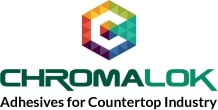In the realm of construction and DIY projects, the choice of adhesive can make or break the success of your endeavor. When it comes to surfacing materials, the importance of selecting the right adhesive cannot be overstated. Whether you're working on a kitchen countertop, bathroom vanity, or a flooring project, the adhesive you choose plays a crucial role in ensuring longevity, durability, and a seamless finish. In this guide, we will explore the key factors to consider when selecting a surfacing adhesives for your project.
- Material Compatibility:
One of the fundamental aspects of choosing the right adhesive is ensuring compatibility with the materials you are working with. Different surfaces require different adhesives. For instance, if you are bonding natural stones like granite or marble, you'll need an adhesive formulated specifically for these materials. Similarly, laminates, quartz, and solid surfaces each have unique characteristics that demand specific adhesive solutions. Before making a decision, carefully examine the materials you're working with and consult the manufacturer's recommendations to guarantee compatibility.
- Application Method:
The method of application is another critical factor to consider. Adhesives come in various forms, such as liquid, paste, or tape. The nature of your project and the materials involved will dictate the most suitable application method. For larger surface areas, a liquid adhesive that can be spread evenly might be preferred, while intricate projects could benefit from the precision of adhesive tapes or gels. Consider the accessibility of the application area and the ease of use associated with each adhesive type.
- Setting Time and Cure Period:
Different adhesives have varying setting times and cure periods. Understanding these timelines is essential to plan your project effectively. Rapid-setting adhesives may be advantageous for projects that require quick turnaround times, but they often allow less time for adjustments. On the other hand, slow-curing adhesives provide more flexibility during installation but necessitate longer waiting periods before the project can be put to use. Strike a balance between the urgency of your project and the desired working time to ensure a successful outcome.
- Strength and Durability:
The strength of the adhesive is paramount, especially for projects that will endure heavy use or external elements. Consider the load-bearing capacity of the adhesive and its ability to withstand temperature fluctuations, moisture, and other environmental factors. For high-traffic areas or surfaces subject to constant wear and tear, opt for adhesives known for their superior durability. Understanding the specific demands of your project will guide you towards an adhesive that guarantees long-lasting results.
- Flexibility and Expansion:
Surfaces are not static; they expand and contract with changes in temperature and humidity. Choosing an adhesive with flexibility is crucial to accommodate these natural movements without compromising the bond. This is particularly important in applications like flooring, where rigid adhesives may lead to cracks and dislodgment over time. Look for adhesives designed to absorb stress and movement, ensuring your project remains intact and visually pleasing for years to come.
- Color Matching:
While the primary function of an adhesive is to provide a strong bond, the aesthetic aspect should not be overlooked. Adhesives come in various colors, and selecting one that matches the color of your surfacing material can significantly enhance the final result. Some adhesives are formulated to be nearly invisible, ensuring a seamless finish. Take the time to consider the visual impact of the adhesive on your project, especially in areas where the bond might be visible.
- Environmental Considerations:
In an era where sustainability is a growing concern, it's essential to choose adhesives with minimal environmental impact. Look for products that are low in volatile organic compounds (VOCs) and comply with environmental standards. Not only does this contribute to a healthier living and working environment, but it also aligns with the global push towards eco-friendly construction practices.
Conclusion:
Choosing the right surfacing adhesives requires a thoughtful consideration of various factors, from material compatibility to environmental impact. By understanding the unique demands of your project and carefully evaluating adhesive options, you can ensure a strong, durable, and visually appealing result. Remember, the adhesive you select is the invisible force holding your project together, so choose wisely and surf the waves of construction with confidence.


No comments yet